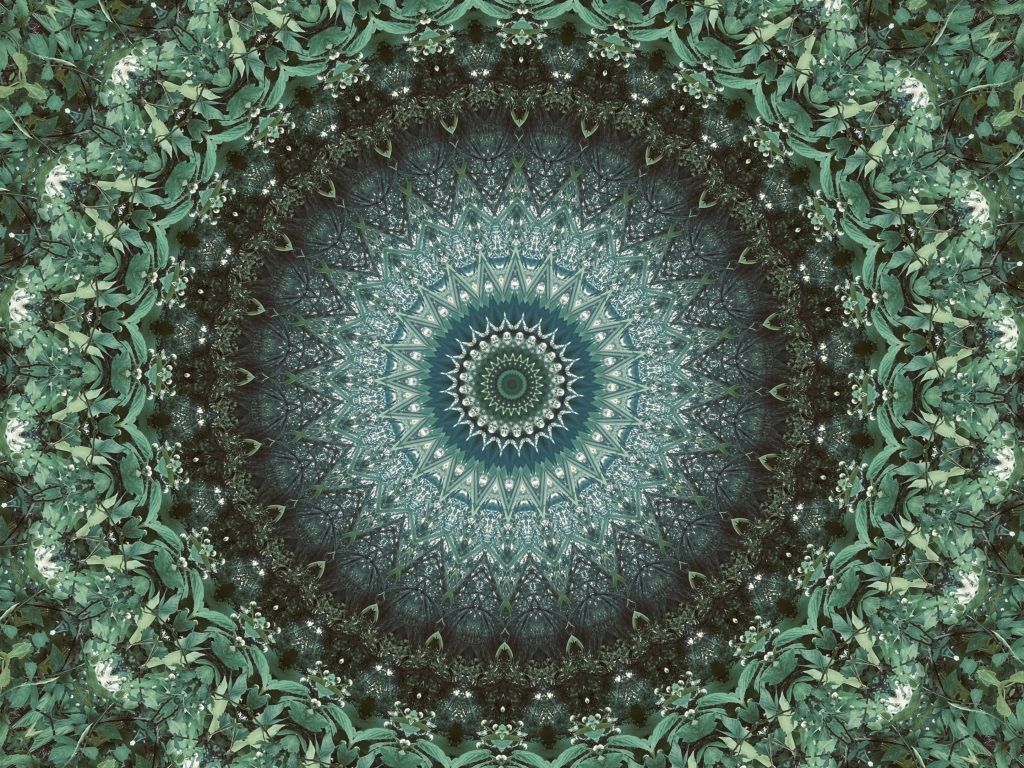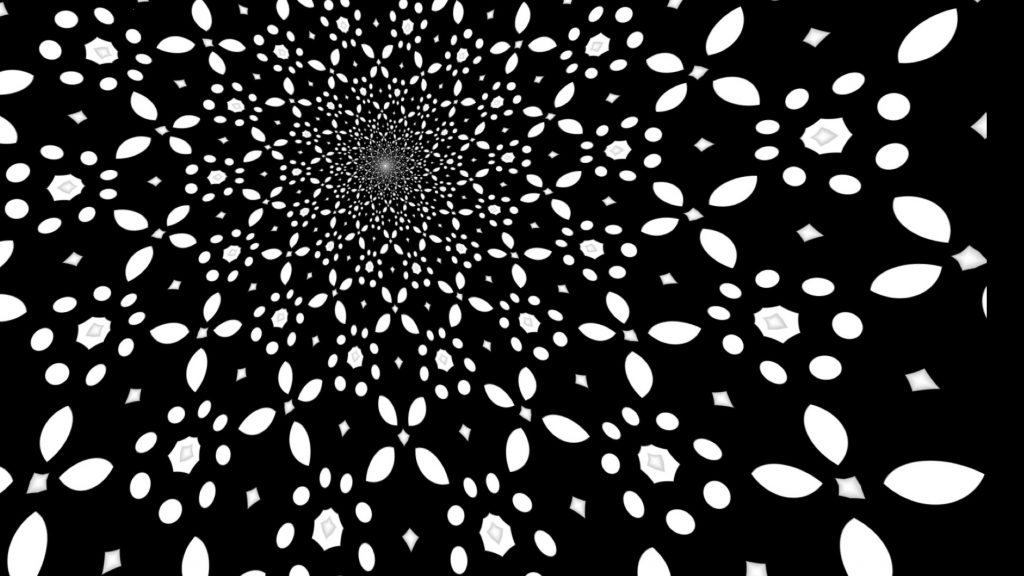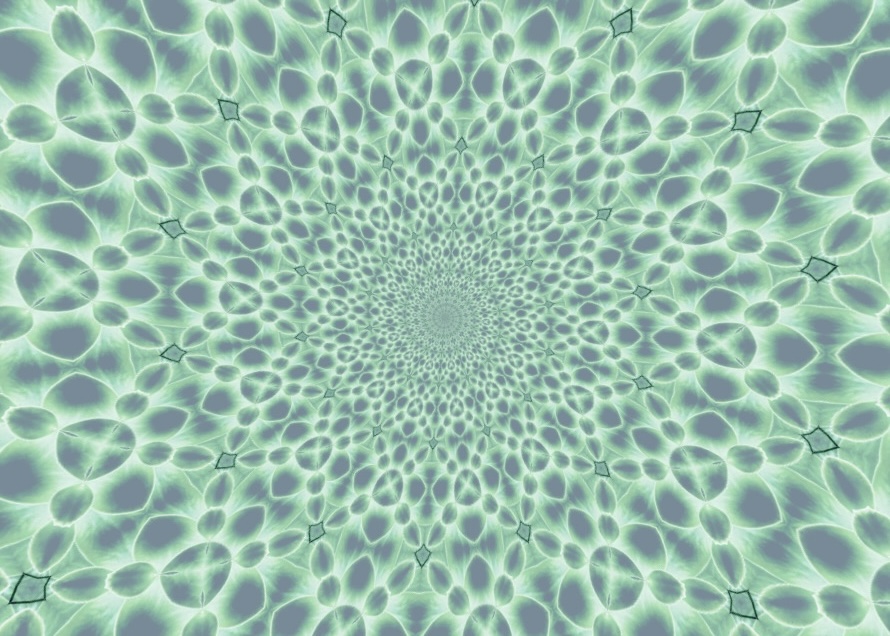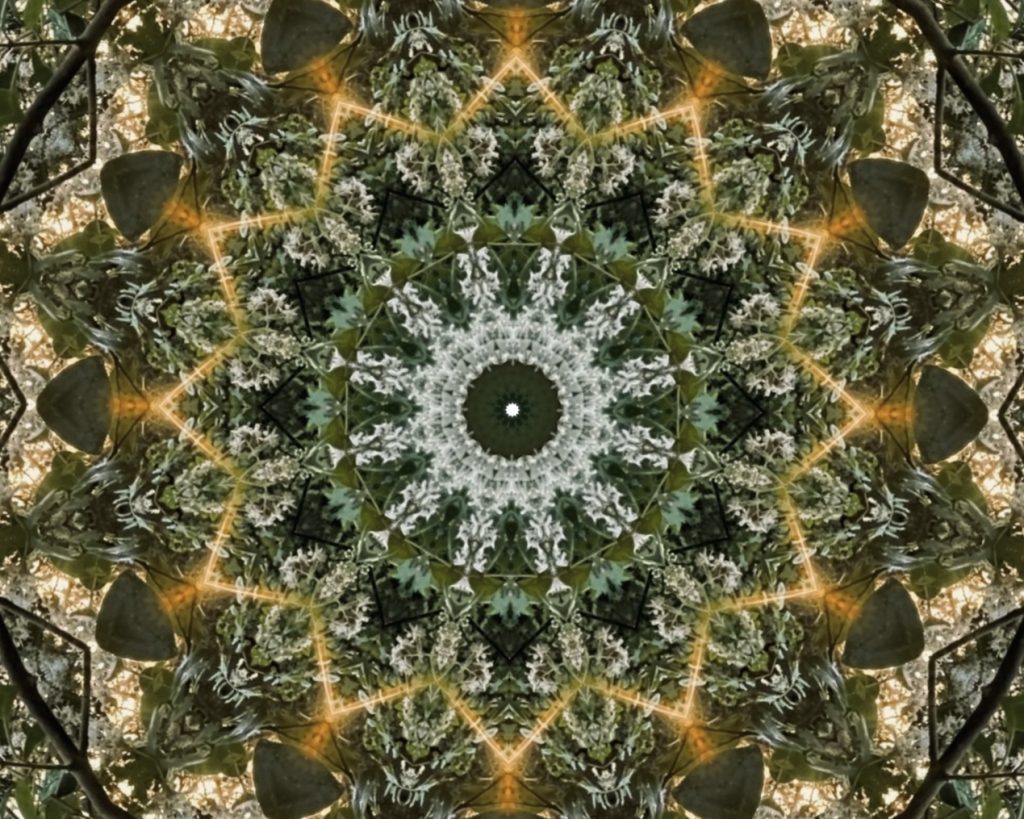Chakras
A chakra ( Sanskrit, romanized: cakra, lit. ’wheel, circle’; Pali: cakka) is one of the various focal points used in a variety of ancient meditation practices, collectively denominated as Tantra, part of the inner traditions of Hinduism (Vedic Traditions) and Buddhism.
Etymology
Lexically, chakra is the Indic reflex of an ancestral Indo-European form *kʷékʷlos, whence also “wheel” and “cycle” (Ancient Greek: κύκλος, romanized: kýklos) It has both literal and metaphorical uses, as in the “wheel of time” or “wheel of dharma”, pervasive in the earliest Vedic texts.
In Buddhism, especially in Theravada, the Pali noun cakka connotes “wheel”. Within the Buddhist scriptures referred to as the Tripitaka, Shakyamuni Buddha variously refers the “dhammacakka”, or “wheel of dharma”, connoting that this dharma, universal in its advocacy, should bear the marks characteristic of any temporal dispensation. Shakyamuni Buddha spoke of freedom from cycles in and of themselves, whether karmic, reincarnative, liberative, cognitive or emotional.
Overview
The Chakras are part of esoteric ideas and concepts about physiology and psychic centers that emerged across Indian traditions. The belief held that human life simultaneously exists in two parallel dimensions, one “physical body” (sthula sarira) and other “psychological, emotional, mind, non-physical” it is called the “subtle body” (sukshma sarira). This subtle body is energy, while the physical body is mass. The psyche or mind plane corresponds to and interacts with the body plane, and the belief holds that the body and the mind mutually affect each other. The subtle body consists of nadi (energy channels) connected by nodes of psychic energy called chakra.
Hindu Tantra
Esoteric traditions in Hinduism mention numerous numbers and arrangements of chakras, of which a classical system of six-plus-one, the last being the Sahasrara, is most prevalent
Hindu Tantra associates six Yoginis with six places in the subtle body, corresponding to the six chakras of the six-plus-one system.
Association of six yoginis with chakra locations in the Rudrayamala Tantra:
|
Place in subtle body |
Yogini |
|
1. Muladhara |
|
|
2. Svadhisthana |
Rakini |
|
3. Manipura |
Lakini |
|
4. Anahata |
Kakini |
|
5. Vishuddhi |
Shakini |
|
6. Ajna |
Hakini |
Buddhist Tantra
The esoteric traditions in Buddhism generally teach four chakras. In some early Buddhist sources, these chakras are identified as: manipura (navel), anahata (heart), vishuddha (throat) and ushnisha kamala (crown). In one development within the Nyingma lineage of the Mantrayana of Tibetan Buddhism a popular conceptualization of chakras in increasing subtlety and increasing order is as follows: Nirmanakaya (gross self), Sambhogakaya (subtle self), Dharmakaya (causal self), and Mahasukhakaya (non-dual self).
A system of five chakras is common among the Mother class of Tantras and these five chakras along with their correspondences are:
- Basal chakra (Element: Earth, Buddha: Amoghasiddhi, Bija (S. ‘seed’) mantra: LAM)
- Abdominal chakra (Element: Water, Buddha: Ratnasambhava, Bija mantra: VAM)
- Heart chakra (Element: Fire, Buddha: Akshobhya, Bija mantra: RAM)
- Throat chakra (Element: Wind, Buddha: Amitabha, Bija mantra: YAM)
- Crown chakra (Element: Space, Buddha: Vairochana, Bija mantra: KHAM)
Chakras play a key role in Tibetan Buddhism, and are considered to be the pivotal providence of Tantric thinking. The highest practices in Tibetan Buddhism point to the ability to bring the subtle pranas of an entity into alignment with the central channel, and to thus penetrate the realization of the ultimate unity, namely, the “organic harmony” of one’s individual consciousness of Wisdom with the co-attainment of All-embracing Love, thus synthesizing a direct cognition of absolute Buddhahood.
Manipura (focus of Inner Fire practice)
Located above the navel, Manipura translates from Sanskrit as “city of jewels” alternatively translated as “resplendent gem” or “lustrous gem”.
Manipura is associated with fire and the power of transformation.
The energies of Prana Vayu and Apana Vayu (inward and outward flowing energy) meet at the point in a balanced system.
Manipura is represented with a downward-pointing red triangle, signifying the tattva of fire, within a bright yellow circle, with 10 dark-blue or black petals like heavily laden rain clouds.
Seed Mantra
The seed mantra is the syllable ‘रं’ (ram). Within the bindu, or dot, above this mantra resides the deity रुद्र Rudra. He is red or white, with three eyes, of ancient aspect with a silver beard, and is smeared with white ashes. Rudra makes the gestures of granting boons and dispelling fear and is seated either on a tiger skin or a bull.
Rudra’s Shakti is the goddess लाकिनी Lakini. She has a black or dark-blue vermilion color; has three faces, each with three eyes; and is four-armed. Lakini holds a thunderbolt, the arrow shot from the bow of काम Kama, and fire. She makes the gestures of granting boons and dispelling fear. Lakini is seated on a red lotus.
Petals
The ten petals of Manipura are dark-blue or black, like heavily laden rain clouds, with the syllables डं, ढं, णं, तं, थं, दं, धं, नं, पं and फं (ḍaṁ, ḍhaṁ, ṇaṁ, taṁ, thaṁ, daṁ, dhaṁ, naṁ, paṁ, and phaṁ) upon them in a dark-blue color. These petals correspond to the vrittis (S. “streams of consciousness”) of spiritual ignorance, thirst, jealousy, treachery, shame, fear, disgust, delusion, foolishness and sadness.
The petals represent the ten Prānas (currents and energy vibrations) that are regulated by the Manipūra Chakra. The five Prāna Vayus are: Prāna, Apāna, Udāna, Samāna And Vyāna. The five Upa Prānas are: Nāga, Kūrma, Devadatta, Krikala and Dhananjaya.
In the Vajrayana
In Vajrayana traditions, the chakra is triangular, red and has 64 petals or channels that extend upwards. This chakra is important as the seat of the ‘red drop’. The short syllable ‘Ah’ is located inside the ‘red drop’.
Meditation on ‘Ah’ is the key component of the practice of tummo, or inner heat. In tummo, a practitioner’s ‘subtle winds’ are made to enter the central channel, and rise up to its top. This is sometimes compared to ‘Raising the kundalini’ in Hindu terminology, melting the subtle white drop in the crown, and causing an experience of great bliss. ‘Raising the kundalini’ is considered the first and most important of the six yogas of Naropa.
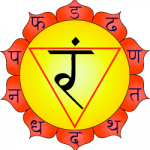
source: wikipedia.org (excerpts from entries: Chakras, Mainpura)


